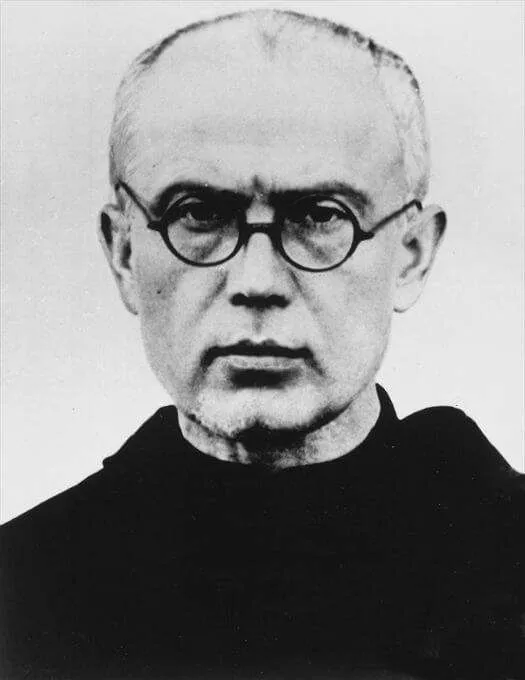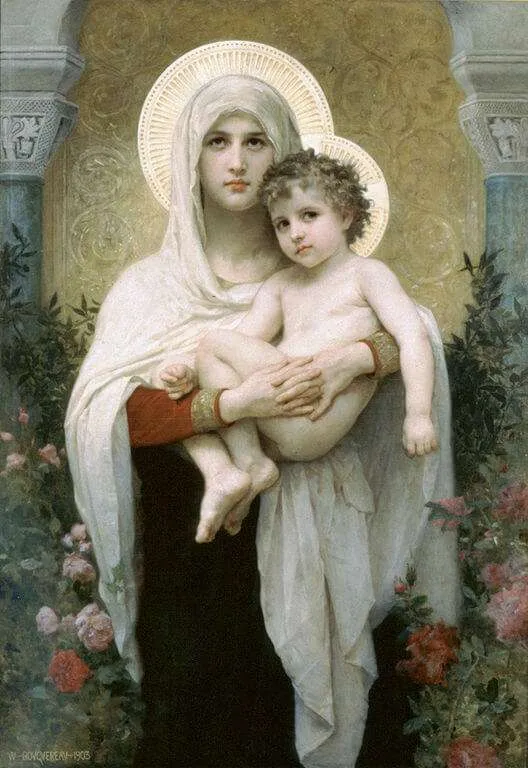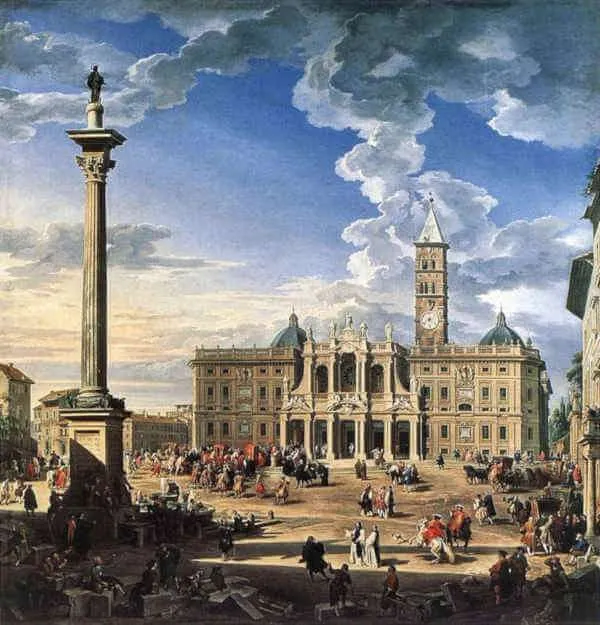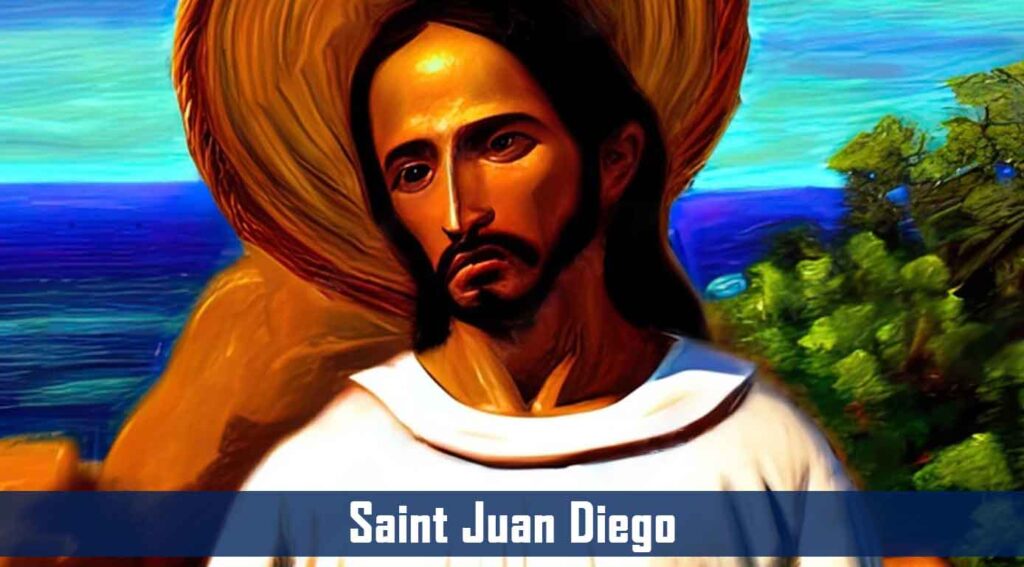1894–1941; Patron Saint of drug addicts, families, journalists, prisoners, and the pro-life movement; Canonized by Pope John Paul II on October 10, 1982
Saint Maximilian Maria Kolbe, born as Raymond, hailed from Zduńska Wola in present-day Poland. At the time of his birth, his hometown had been under the control of the Russian Empire since 1795. Despite their material poverty, his family was spiritually rich, particularly owing to their mother, Maria, who instilled in her children a deep devotion to the Mother of God. They prayed the Angelus, the Litany of Loreto, and the rosary daily. Raymond had two surviving brothers: an older one named Francis and a younger one named Joseph. Two other brothers, Walenty and Antoni, passed away at a young age.
As a child, Raymond was known for his devoutness, as well as his mischief. Whenever he committed any transgressions, he would immediately offer himself for corporal punishment, which was common during that period. After one such prank, his mother exclaimed, “What will become of you!” This question profoundly affected young Raymond, who later prayed to the Blessed Virgin about his future. He was only twelve at the time. His mother observed a significant change in his behavior following this episode. He created an altar for the Blessed Mother in his room and spent long periods in prayer, often to the point of tears. On being questioned about his altered behavior, Raymond shared that after his mother’s reprimand, he had sought guidance from the Blessed Mother, who had appeared before him in the church, offering two crowns—one white signifying purity and one red signifying martyrdom. When she asked which one he chose, he replied, “I choose both!” This encounter further deepened his devotion to the Blessed Mother and Saint Joseph.
Due to the family’s financial constraints, Raymond received most of his early education from his mother and the parish priest. Upon recognizing Raymond’s intellect, a local pharmacist offered to tutor him. At the age of thirteen, Raymond and his older brother Francis attended a retreat organized by the Conventual Franciscans. They were then invited to join the newly established seminary in Lwów, present-day Lviv, Ukraine, which was part of the Austro-Hungarian Empire. This necessitated crossing the border without a passport, which they accomplished with the aid of their father. In 1907, Raymond and Francis entered the minor seminary.
In 1910, Raymond and Francis toyed with the idea of leaving the Franciscans to join the military. Before they could decide, their mother showed up and informed them that their younger brother was also joining the Franciscans, so they decided to stay. Their mother further shared that their father was moving to Krakow to live with the Franciscans and that she would be living in Lwów with the Felician Sisters to stay close to her sons. Raymond was given the name Maximilian upon entering the novitiate and made his first vows in 1911. He made his final vows in 1914, also adopting the name Mary, becoming Brother Maximilian Mary Kolbe. He was sent to Rome to complete his studies, earning doctorates in philosophy and theology.
During World War I in 1914, Brother Maximilian’s father joined the Polish Legions fighting for Polish independence. He was subsequently arrested and executed by the Russians. His mother moved to Krakow, entered the Felician Sisters, and adopted the name Sister Maria Felicyta. His brother Francis left the seminary to serve in the military, later marrying and having one child. Unfortunately, he died in a concentration camp in 1943.
In 1917, while praying in the seminary chapel, Brother Maximilian was inspired to form the Militia Immaculatae, the “Army of the Immaculate One,” particularly in response to witnessing anti-Catholic sentiments during the war. The organization aimed for the conversion of sinners, heretics, schismatics—particularly Freemasons—and the sanctification of all people under the guidance of the Blessed Virgin Mary. Following his ordination as a priest, Father Kolbe relocated to Krakow, where he taught Church history and expanded his Militia Immaculatae.
In 1922, Father Kolbe started publishing a monthly magazine titled “Knight of the Immaculata.” In 1927, he founded a new Franciscan friary near Warsaw called Niepokalanów, or “City of the Immaculate Mother of God.” In 1930, Father Kolbe established a religious house near Nagasaki, Japan, where the friars produced a Japanese version of their magazine, eventually printing 50,000 monthly papers. He returned to Niepokalanów in 1936. By 1939, the friary had become one of the largest religious houses in the world, also housing his Militia Immaculatae. They printed their materials from the friary, eventually reaching over a million households each month. His younger brother, now named Father Alphonse, aided him in his endeavors.
World War II broke out in 1939 when the Germans invaded Poland. Father Kolbe and his friars did their utmost to help those being persecuted. At first, they were forced out of their friary but were later permitted to return. Once they returned, they recommitted themselves to their work. At that desperate time, their publications inspired people and gave them hope. Though the friars were careful in what they wrote, the German authorities eventually designated them as enemies. Furthermore, the friars provided refuge to thousands of Poles, including 2,000 Jews whom they protected from the concentration camps. After two years of German occupation, the Gestapo had had enough.
On February 17, 1941, the German Gestapo showed up at Niepokalanów where Father Kolbe warmly greeted them. By the end of their visit, however, the Gestapo arrested Father Kolbe and four of his friars, sending them to the Pawiak prison. In this first prison, Father Kolbe did all that he could to inspire faith and hope in his fellow inmates. He endured harsh treatment from some of the guards but always responded with charity. He heard confessions of fellow inmates, pointed them to Christ, and prayed with them.
Father Kolbe was transferred to Auschwitz as prisoner #16670 on May 28. Auschwitz was a death sentence, and those who went there knew it. This didn’t deter Father Kolbe from his divine mission. Though he exchanged his Franciscan habit for a blood-stained prisoner’s uniform, he continued to minister to the people all around him. In Auschwitz, Father Kolbe and the other prisoners endured the harshest of treatment. They were beaten to the point of death and then expected to work. After one harsh beating that Father Kolbe survived, he was brought to the infirmary by fellow prisoners. The doctor who tended to him later testified, “I can say with certainty that during my four years at Auschwitz, I have never seen such a sublime example of God’s love for one’s neighbor.”
In July, after a man escaped from Father Kolbe’s barracks, ten men were selected to die by starvation as punishment and as a deterrent to others who thought of escaping. Among the selected was Franciszek Gajowniczek, who cried out, “My poor wife, my poor children!” Father Kolbe’s heart was moved to compassion in that inhumane environment, and he requested permission to take Franciszek’s place, explaining to the guard that he had no wife or children. Permission was granted. He survived for two weeks before the impatient guards, needing the bunker for other purposes, administered a lethal injection. Father Kolbe willingly offered his arm, showing no fear of death. Soon after his death, word of his martyrdom of charity spread throughout Auschwitz and inspired many with faith and hope.
Saint Maximilian Mary Kolbe’s vision had come true. He first received the crown of purity and then the crown of martyrdom. His work to spread the Gospel through the Militia Immaculatae had a powerful effect upon the people of his time. His love, to lay his life down for a stranger, will live on until the end of time. Ponder the depth of love it would take to do such a thing, and pray that this same love will permeate your own life in imitation of this holy saint of God.
Source: https://mycatholic.life/saints/saints-of-the-liturgical-year/august-14—saint-maximilian-mary-kolbe-priest-and-martyr/








